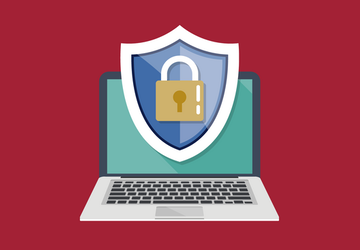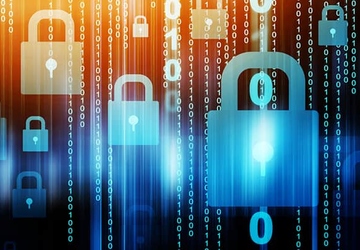How to protect your device from malware
The term malware, short for malicious software, describes one of the significant problems in device and personal data security. In addition to viruses, malware can also be used to compromise the security of your device by accessing your sensitive data and stealing your privacy. To protect your device and prevent malware attacks, here are ten simple but effective tips: To protect your device and prevent malware attacks, here are some simple but effective tips:
Install antivirus software

Did you know that the antivirus software you install needs to be from a trusted brand, not a product from "everywhere"? Antivirus software is designed to find, block, and eliminate malware before it harms your system. Choose popular antivirus software with real-time protection. Updates are frequent.
Run automatic scans and updates to protect your device from current threats. Free antivirus software may only cover basic security; however, unlike premium versions, it comes with additional advanced security features and multiple layers of defence.
Updated with software
It's clearly important to regularly update your operating system, applications, and software to avoid leaving holes open for malware. Security updates are primarily released as patches and fixes designed to address known vulnerabilities that malware can use as entry points.
If possible, allow automatic updates so you don't have to worry about your device missing important security updates. Also, do not use outdated software versions, as security updates may not support them, and they may become targets for malware attacks.
Download from verified websites
Malware is often spread through emails with attachments, malicious links, and downloads from unreliable sources, just to name a few ways. Be careful when opening email attachments, especially those from unknown senders. Don't fall for phishing emails that claim to be from legitimate sources and try to trick you into clicking dangerous links or revealing personal information.
Use strong passwords and two-factor authentication
Due to their strength, passwords are the cornerstone of device and account security, preventing unauthorized access and malware attacks. Combining uppercase and lowercase letters, numbers, and special characters increases password complexity. Don't use predictable passwords (like "password123") or well-known words (like "all-inclusive life"). Consider using a password manager to store and generate strong passwords for your accounts.
Ensure safe navigation behaviour
Browsing the internet safely can help reduce malware infections and threats. Do not click on pop-up ads, illegal banners, or links that may load malware. Use a secure and advanced web browser with native security features such as phishing protection and malicious website warnings.
Be aware of potentially malicious browser extensions or plug-ins that may come from untrusted sources, and only install browser extensions or plug-ins that you know come from legitimate sources. Make sure to clear your browser cache and cookies regularly to remove any malicious data that may have accumulated while browsing.
Enable firewall protection

Enable a firewall on your device as another preventive measure against malware and unauthorized network intrusions. If you want to block internal traffic, firewalls are the best option, as they block all unwanted network activity and protect your device. Set up a firewall to allow only trusted applications and services to communicate over the network. A hardware firewall may be the best choice for your home and work networks if you want to protect your network from all aspects.
Data should be backed up regularly
Regularly updating files and data is necessary to protect your sources from malware attacks that may constitute ransomware. Create a copy of your stored data on an external hard drive, cloud storage service, or secure backup platform. Automatically back up and do it regularly to avoid manual backups. If you lose your data, you can use your device's backup feature to recover all your important information.
Understand phishing schemes
Phishing is one of the most common tools cybercriminals use in cyberattacks, aiming to trick individuals into revealing sensitive information or downloading malware. Educate yourself and your employees on common phishing methods like fake emails, websites, and social engineering threats. Be familiar with phishing attempts, verify the sender, and never click on suspicious links or provide your personal information to unknown parties.
Secure and stable wireless network
If your wireless network is used in homes and businesses, you must ensure it's secure enough to prevent unauthorized access and possible malware attacks. The best way is to change your WiFi router's default SSID (network name) and password to a strong and unique combination. To ensure network security, use WPA2 or the newer WPA3 protocol.
Monitor and manage authentication and access control
Monitor and control the permissions granted to your machines and systems' applications, software and accounts. Restrict user permissions to limit the impact of a malware attack or unauthorized access. Be careful when allowing applications or software to perform their functions, especially if they require too many permissions and access to private data or files.
Conclusion
In addition to these basic measures, there are a few other tips to improve your overall network security, including enabling a software firewall, regular backups, being wary of phishing scams, going the extra mile to secure your home network, and monitoring who uses your equipment. Instructions. Implementing preventive security measures, user education, and regular maintenance practices can help avoid malware infections, data breaches, and hackers.
Related Posts
- Emerging Sustainable Tech Innovations Shaping a More Environmentally Friendly Future
- Recent Advances and Applications of Artificial Intelligence
- 10 Popular 5G Applications Revolutionizing Communication
- 10 Must-Have Gadgets for Every Tech Enthusiast in 2023
- 10 Must-Have Smart Home Devices for 2024
- Selecting the Perfect Laptop to Suit Your Requirements